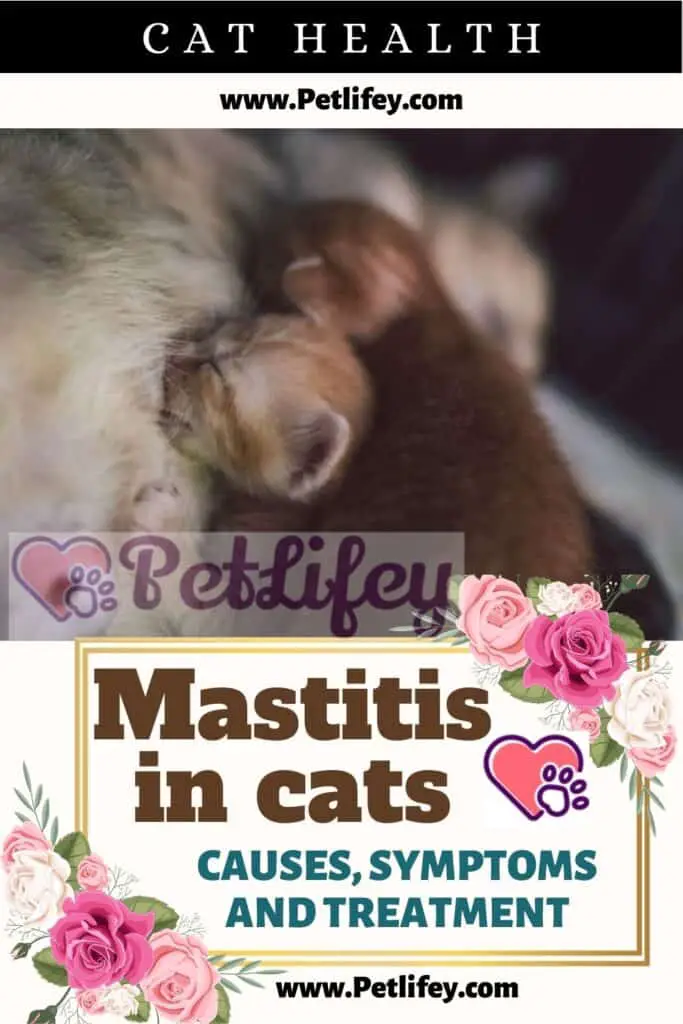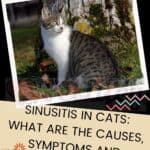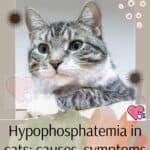
Mastitis in cats is a disease that affects cats and kittens. We learn to recognize it and help the animal to heal.
Mastitis in the cat, is an inflammation of the mammary glands, usually appears after childbirth but not only. It can manifest itself as a mild inflammation or even a severe infection accompanied by gangrene.
This is why we must learn to recognize the symptoms in order to take the cat to the vet at the first clinical signs, so that it can be treated. In this article we will deal with the causes, symptoms, diagnosis and treatment of this very painful pathology.
Causes of mastitis in the cat
Most mastitis in cats is caused by ascending bacterial infections (so bacteria enter the breast), mainly streptococci, staphylococci and coliforms. These bacteria enter through the milk ducts or from the micro lesions caused on the udders by the nails and teeth of puppies.
Also because it is a disease that affects not only newborn cats but also newborn cats. For example, when the weaning of kittens occurs suddenly and not gradually, when there is a lack of hygiene or during the phase of puppies sucking from the udder.
Mastitis in cats can develop on a single udder, part of one udder, or multiple udders. If mastitis is not treated in time, serious complications can occur, such as: breast abscesses, fistulas, gangrene, breast loss, septicemia and even death.
Symptoms
The symptoms found in cat mastitis appear different depending on the severity of the disease. All in all, the clinical signs that in any case are revealed in the animal can be the following at any stage the pathology may be, they are the following:
- formation of abscesses or gangrene;
- puppies do not gain adequate weight (5% more birth weight per day);
- the cat does not want to breastfeed the kittens;
- moderate swelling of the mammary glands, which appear hard and sometimes ulcerated;
- breast pain;
- anorexia;
- viscous milk;
- bleeding or purulent breast discharge;
- fever;
- vomiting in cats.
If only some of these symptoms occur, you should immediately take the cat to the vet.
Diagnosis and treatment of mastitis in the cat

Once the symptoms have been identified in the cat, a first detailed physical examination by the veterinarian is made, the latter will prescribe a cytology of the mammary secretion, a bacterial milk culture and a blood test. Once mastitis in cats is diagnosed, treatment is usually easy to manage at home.
One thing to underline is that the cat will not be forced to stop breastfeeding the kittens, but rather breastfeeding must have a minimum duration of between 8 and 12 weeks. Weaning is reserved only for cases where abscess formation or gangrenous mastitis occurs.
Treatment will begin with broad-spectrum antibiotic therapy lasting at least 2 weeks. The important thing is to be constant in the care and not to interrupt it even if the animal seems to have recovered and be well after a few days. Non-steroidal anti-inflammatories for veterinary use can be used to reduce pain.
In the case of mastitis with gangrene, surgery can be used to remove necrotic tissue. Preventing mastitis in cats is possible if you take care of your pet, trying to do a daily physical exam when you pet him and maybe at the time of breastfeeding make sure that the kittens are breastfeeding from all breasts and, if necessary, do physically rotate the puppies, making them alternate.
Also remember that neutering your cat greatly reduces the chances of mastitis and cancer. In any case, most of the time the prognosis is good, but the only rule that the first action is taken is the simpler the cure.






